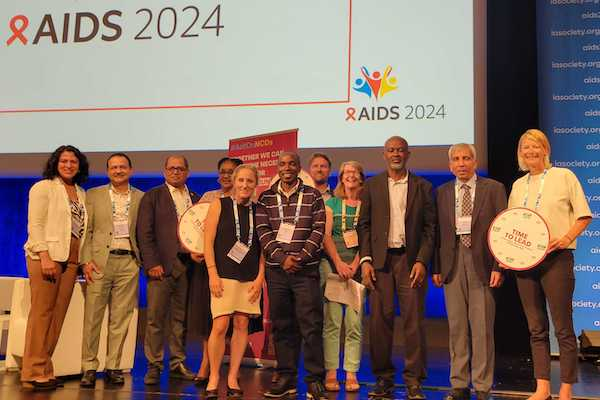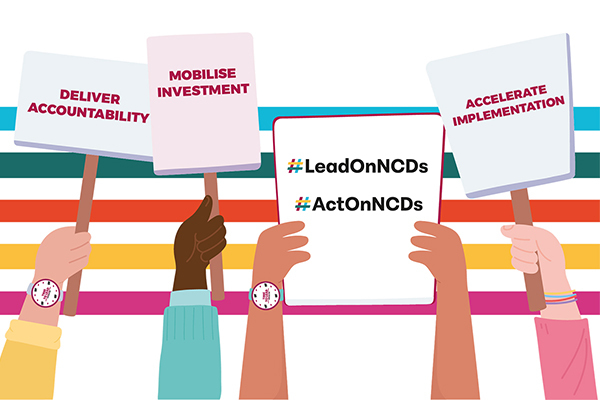The ability to live a long, healthy life is now the reality for most people living with HIV – but this progress is under threat.
By 2035, a projected 71% of the nearly 40 million people living with HIV worldwide will be living with one or more noncommunicable disease (NCD) – such as cancer, cardiovascular disease, diabetes, hypertension, and mental health conditions.
Revolutionary medicines and expanded access to screening and treatment around the world have transformed HIV from being a death sentence into a chronically manageable disease. People living with HIV now enjoy life spans equal to those who do not have HIV.
The cruel irony of that success is that many people living with HIV now face the same NCD challenges as older adults, but with even higher risks.
- People living with HIV are twice as likely to have cardiovascular disease
- Women with HIV have six times the risk of cervical cancer
- One in three individuals with HIV live with depression
- There is an increased risk of diabetes among those with HIV
Calls by civil society and people living with HIV to integrate HIV and NCD services were met in 2021, as UN Member States pledged to ensure 90% of people living with HIV would have access to NCD and mental health care by 2025.
But in 2024, many people living with HIV are still unable to access the NCD care they need, and especially in low- and middle-income countries. Continued barriers include limited or lack of access to care; lack of NCD awareness among medical professionals; availability of diagnosis and treatment; out-of-pocket payments; stigma in communities and health centres.
The case for integration of NCD prevention, diagnosis, treatment, and care within HIV services cannot be overstated. Compared to standalone, disease-specific care, integrated and person-centred care covering a wide range of services can:
- Improve access, acceptability, and affordability of health services.
- Improve both NCD and HIV health outcomes for people living with HIV.
- Save resources for both patients and health systems, with patients benefitting the most because of synchronised care visits, or care offered closer to their homes.
- Deliver good returns on investment and better experiences for patients – and at a relatively small extra cost when compared to the positive health outcomes they generate.
In 2025, the 4th UN High-Level Meeting on NCDs offers a key moment to align global health and development priorities and accelerate towards a people-centred Universal Health Coverage (UHC) that leaves no one behind.
The HIV and NCD communities are calling on governments to protect the health and quality of life of people living with HIV by ensuring equitable access to integrated, people-centred NCD services across the continuum of care.
We call for commitment at the highest level and come ready to build on our successes, multi-sectoral and community-led experiences, and people-centred approaches, to address health inequity.
Signed,
NCD Alliance, STOPAIDS, GNP+, the International AIDS Society, PATH, Frontline AIDS and the Alliance for Public Health after AIDS 2024





